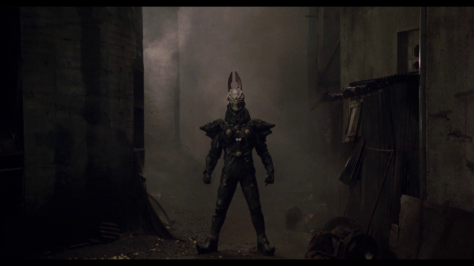
As the seventies dawned, Doctor Who went through several major changes: it was broadcast in colour, Jon Pertwee took over the lead role, and for a few years they changed the format of the show, locking it to a contemporary Earth setting without the Doctor’s time and planet-hopping shenanigans. In effect, this meant that most of the stories were made in the image of ones like “The Web of Fear”, with the Doctor working with a special military organization, which placed the “monsters in your backyard” concept at the forefront more often than not. Even with a more traditional adventure story structure in place, the series honed its horror credentials, and the early years of colour Doctor Who scarred generations with serials like “Spearhead From Space” (the first story of the era) and “Terror of the Autons”, which showed everyday plastic objects (including department store mannequins) transformed into deadly menaces—this is the era when the show really started living up to its legacy of making kids to “hide behind the couch.” Meanwhile, other stories, like the early serial “The Silurians” (where the monsters are allowed to be even a little sympathetic) showcased different and interesting ambitions in the monster space. Even when the plots became more limited in some ways, the creative minds at the helm adapted around those limitations and continued to develop the show’s distinguishing features.
Considering that I’ve written about two stories set on our planet, for the sake of variety I’ve chosen to skip to the fourth year in Pertwee’s tenure, when the series returned to journeys across time and space. The second story of the series’ tenth season has many intriguing qualities, including its wonderfully simple yet evocative title*, but most importantly is another serial written by Robert Holmes, who would go on to write previous site subject “The Ark in Space” (Holmes also wrote the aforementioned “Spearhead From Space” and “Terror of the Autons”, so he was making a name for himself on this series early), and with several more beloved stories to his name, he remains one of the more celebrated creative figures in the show’s history. As in his later stories, “Carnival of Monsters” demonstrates Holmes’ knack for infusing even standard-sounding Sci-Fi scenarios with his sardonic sense of humour, and in this case even carries a slyly meta take on the series itself.



